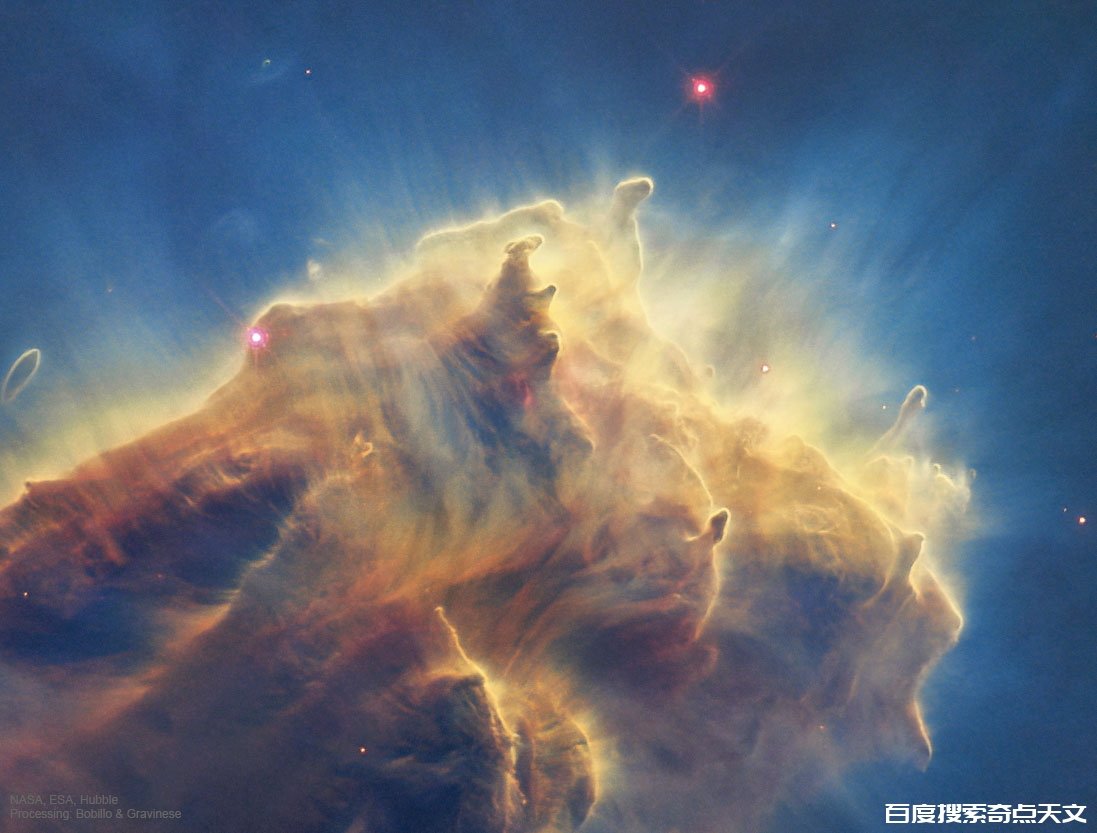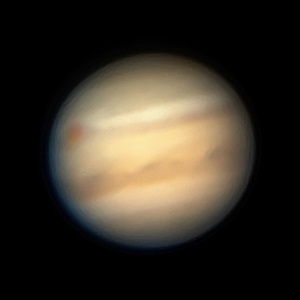

Star Formation in the Eagle Nebula
Image Credit: NASA, ESA, Hubble; Processing & Copyright: Ignacio Diaz Bobillo & Diego Gravinese
Explanation: Where do stars form? One place, star forming regions known as “EGGs”, are being uncovered at the end of this giant pillar of gas and dust in the Eagle Nebula (M16). Short for evaporating gaseous globules, EGGs are dense regions of mostly molecular hydrogen gas that fragment and gravitationally collapse to form stars. Light from the hottest and brightest of these new stars heats the end of the pillar and causes further evaporation of gas and dust — revealing yet more EGGs and more young stars. This featured picture was created from exposures spanning over 30 hours with the Earth-orbiting Hubble Space Telescope in 2014, and digitally processed with modern software by experienced volunteers in Argentina. Newborn stars will gradually destroy their birth pillars over the next 100,000 years or so — if a supernova doesn’t destroy them first.
Tomorrow’s picture: road to knowhere
鹰状星云的恒星形成活动
影像提供: NASA, ESA, Hubble; 影像处理和版权: Ignacio Diaz Bobillo & Diego Gravinese
说明: 恒星形成于何处?在鹰状星云(M16)里就有这样的一个地方,在这根庞大的气体和尘埃柱的末端,就有许多称为“EGGs(星蛋)”的恒星形成区。EGGs是蒸发中的气态云球之简称,是主要由氢气分子所组成的致密区,这些氢气会分裂并发生重力作用坍缩形成恒星。来自其中最炽热和最明亮的新恒星之星光,加热云柱的末端,让气体和尘埃进一步蒸发,从而挖掘出更多的星蛋和年轻恒星。这张主题影像,是由轨道上的哈勃太空望远镜在2014年,拍下总曝光时间超过30小时的多张照片,然后再由很有经验的阿根廷志愿者使用现代的软件处理建构而成。在接下来100,000多年的期间里,新生恒星将逐渐摧毁它们的诞生柱,前提是超新星没有率先摧毁它们的话。
明日的图片: road to knowhere



